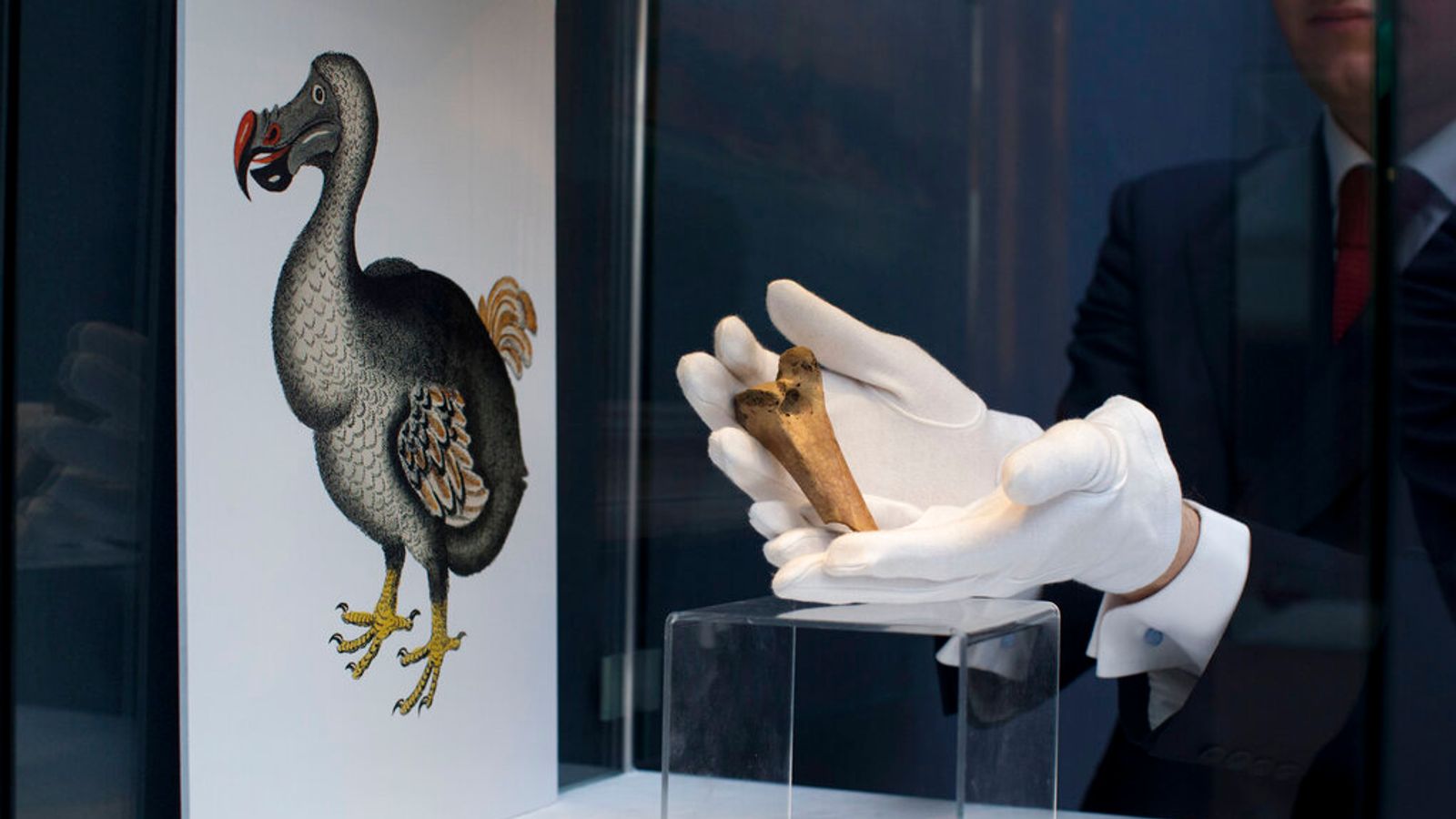Scientists hoping to bring extinct species back to life have set their sights on reviving the dodo.
The flightless bird, native to Mauritius, infamously went extinct in the 1600s due to a combination of hunting by sailors and the destruction of its habitats by invasive species brought across to the Indian Ocean island by their ships.
But after more than 400 years since the last recorded sighting of the bird, scientists are hoping to spark a stunning Jurassic Park-style comeback.
US-based firm Colossal Biosciences, which two years ago announced plans to bring back the woolly mammoth, said it now wants to bring back the iconic bird as well.
The firm, based in Dallas, Texas, has already raised an additional $150m (£121m) to support the project.
The company hopes it can recreate the dodo through DNA – much like the fictional experts in the 1993 Steven Spielberg film.
In the Hollywood blockbuster, the scientists combined dinosaur DNA embedded in fossilised mosquitoes in amber combined with frog DNA to bring dinosaurs back to life.
In the real world, experts at Colossal Biosciences hope to take DNA from the dodo’s closest living relative, the Nicobar pigeon, and edit them to resemble dodo cells.
It may be possible to put these tweaked cells into developing eggs of other birds, such as pigeons or chickens, to create offspring that may in turn naturally produce dodo eggs, according to Beth Shapiro, a molecular biologist on Colossal’s scientific advisory board, who has been studying the dodo for two decades.
The concept is still in an early theoretical stage for dodos.
Ms Shaprio’s team now plans to study DNA differences between the Nicobar pigeon and the dodo to understand “what are the genes that really make a dodo a dodo”.
Read more:
Elephant extinction must be avoided for sake of climate, study warns
Cheetahs return to India 70 years after being declared extinct
But Ms Shaprio warned “it’s not possible to recreate a 100% identical copy of something that’s gone”.
That is because animals are a product of both their genetics and their environment – which has changed dramatically since the dodo was last sighted in the 1600s.
Other scientists, meanwhile, are sceptical about the idea of the project, warning that “de-extinction” efforts divert attention and money away from efforts to save species still on Earth.
Duke University ecologist Stuart Pimm said: “There’s a real hazard in saying that if we destroy nature, we can just put it back together again – because we can’t.
“And where on Earth would you put a woolly mammoth, other than in a cage?”
Boris Worm, a biologist at the University of Dalhousie in Halifax, Nova Scotia, added: “Preventing species from going extinct in the first place should be our priority, and in most cases, it’s a lot cheaper.”








